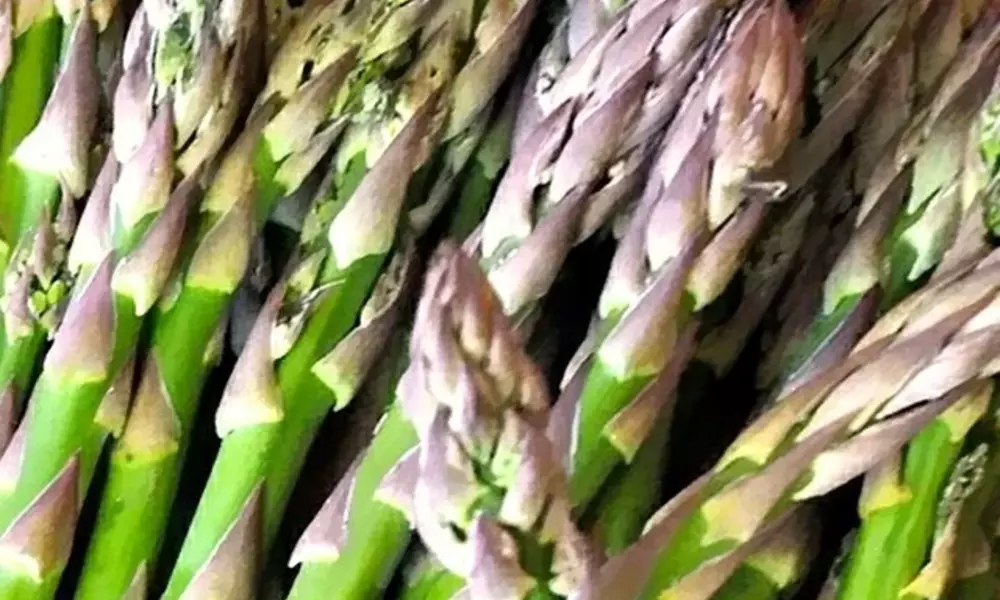Companion planting is a gardening technique that involves strategically planting different crops together to maximize their growth, health, and productivity.
In this blog, we will explore the world of asparagus companion plants. By understanding what plants grow well with asparagus and what to avoid planting nearby, you can create a thriving garden that benefits both your asparagus crop and the surrounding plants.
What Is Companion Planting?
Companion planting is a time-honored gardening practice that involves planting different crops together to create a mutually beneficial environment.
By selecting compatible plants, you can promote pest control, enhance soil fertility, and improve overall plant health. This technique encourages biodiversity and creates a natural balance in the garden.
The Importance of Companion Planting with Asparagus
Asparagus is a perennial vegetable that can greatly benefit from companion planting. By carefully selecting companion plants, you can enhance the growth and flavor of your asparagus spears, attract beneficial insects for pollination, repel harmful pests, and make the most of limited garden space. Companion planting with asparagus can create a harmonious garden ecosystem.
Good Asparagus Companion Plants
Certain plants thrive when grown alongside asparagus, offering various benefits such as pest control, improved soil quality, and enhanced flavors. Here are ten excellent asparagus companion plants to consider:
Basil
- Repels pests such as aphids and mosquitoes.
- Enhances the flavor of asparagus when planted nearby.
Cilantro
- Draws helpful insects like lacewings and ladybirds.
- Improves soil quality and provides natural mulch when the leaves decompose.
Comfrey
- Acts as a nutrient-rich mulch when leaves are used as a natural fertilizer.
- Enhances soil fertility and supports the growth of asparagus.
Dill
- Attracts beneficial insects like hoverflies and predatory wasps.
- Repels harmful pests such as aphids and spider mites.
Grapes
- Offer a vertical element in the garden, providing shade for asparagus.
- Create a microclimate that can benefit the growth of asparagus.
Nasturtium
- Deters aphids and other pests with its pungent scent.
- Attracts pollinators like bees and butterflies.
Nightshades
- Share similar growth requirements with asparagus.
- Help deter asparagus beetles, which can be harmful to asparagus plants.
Parsley
- Repels harmful insects like carrot flies and asparagus beetles.
- Attracts beneficial predators such as hoverflies and parasitic wasps.
Petunias
- Act as a natural deterrent to aphids and other insects.
- Add vibrant colors to the garden, enhancing its visual appeal.
Strawberries
- Serve as a beneficial ground cover, suppressing weeds around asparagus.
- Attract pollinators and provide a mutually beneficial environment.

What Not To Plant With Asparagus
While companion planting offers numerous benefits, some plants may inhibit the growth of asparagus or attract pests. It’s important to avoid planting certain vegetables and herbs near asparagus.
Here are some plants to avoid:
Rhubarb
- Competes with asparagus for space, nutrients, and sunlight.
- Can hinder the growth of asparagus plants.
Onions and garlic
- Inhibit the growth of asparagus and cause stunted development.
- Interfere with the flavor of asparagus.
Potatoes
- Share common pests and diseases with asparagus.
- Planting them together increases the risk of infestations and the spread of diseases.
Fennel
- Inhibits the growth of asparagus due to its allelopathic properties.
- Can negatively affect the flavor of asparagus.
Asparagus Companion Planting Chart
To provide a comprehensive reference, here is a chart summarizing the companion plants for asparagus:
| Companion Plants | Benefits | Considerations | |
|---|---|---|---|
| Basil | Repels pests and enhances the flavor | Avoid planting near rue or sage | |
| Cilantro | Attracts beneficial insects | Self-seeding plants may require control | |
| Comfrey | Nutrient-rich mulch, soil fertility | Spreads rapidly may become invasive | |
| Dill | Attracts beneficial insects | Self-seeding plants may require control | |
| Grapes | Provides vertical element, shade | Requires proper support and maintenance | |
| Nasturtium | Deters pests, attracts pollinators | Can become invasive if not properly managed | |
| Nightshades | Similar growth requirements | Rotate planting locations to prevent diseases | |
| Parsley | Repels harmful insects | Requires regular harvesting to prevent bolting | |
| Petunias | Deters aphids, adds visual appeal | Annuals, need to be replanted each year | |
| Strawberries | Ground cover attracts pollinators | Requires proper spacing and regular maintenance |
Conclusion
Companion planting is a valuable technique that can greatly benefit your asparagus garden. By strategically selecting companion plants, you can create a harmonious and productive ecosystem.
The right companions will help deter pests, attract beneficial insects, improve soil fertility, and enhance the growth and flavor of your asparagus.
Conversely, it’s important to avoid planting incompatible species that may hinder the growth of asparagus or attract pests.
FAQs
Q1: Can I plant peas with asparagus?
Yes, you can plant peas with asparagus. Peas can be compatible companion plants for asparagus, as they have similar growth requirements and can coexist well together in the garden.
Q2: Can I plant beans with asparagus?
Yes, you can plant beans with asparagus. Beans and asparagus are compatible companion plants and can be grown together successfully in the garden.
Q3: What should you not plant next to asparagus?
It is not recommended to plant onions, garlic, potatoes, or fennel next to asparagus.
Q4: What else can you plant in an asparagus bed?
In an asparagus bed, you can also plant companion plants such as basil, cilantro, comfrey, dill, grapes, nasturtium, nightshades (e.g., tomatoes, peppers), parsley, petunias, and strawberries.
